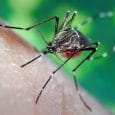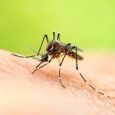The battle against Zika takes awareness and the willingness to eliminate and avoid it. Prevention is the best way to erase Zika from your list of insect-borne diseases such as dengue and malaria. The main means to acquire Zika is a dreaded mosquito bite. Because of this, many communities are striving to keep their homes and work areas free from mosquitoes and other blood-sucking insects. Preventing mosquito bites involves using repellents. DEET and Permethrin are the two most widely-used mosquito repellents on a global scale. Which should you use?
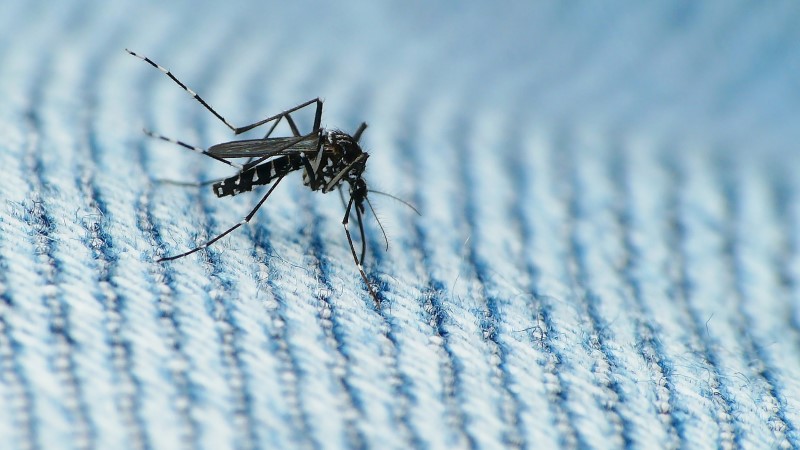
Knowing Zika
Zika causes microcephaly in unborn babies. Microcephaly is a defect manifested by a head smaller than that of a normal baby’s. Babies diagnosed with microcephaly also have smaller brains, which might be underdeveloped. Microcephaly starts during pregnancy. In this condition, the fetus’ brain does not continue to develop after the baby is born.
The congenital Zika syndrome is a collection of birth defects among babies and fetuses with the Zika virus while they were still in the womb. Here are the features of the Zika syndrome:
- Clubfoot and other manifestations of joints having limited ROM (range of motion)
- Partially collapsed skull because of severe microcephaly
- Muscles are toned excessively, which restricts movement
- Damage behind the eye
- Decrease in the brain tissue with a specific brain damage pattern

When it comes to future pregnancies, women who have Zika but are not pregnant are not at risk for having birth defects after this virus has cleared from their systems. Enough evidence proves this. Once a person has been infected with Zika, he or she gains immunity from Zika in the future.
Guillain-Barré Syndrome and Zika
GBS or Guillain-Barré syndrome is not a common condition of the nervous system. When you have this, your immune system destroys your nerve cells. Thus, you experience muscle weakness and paralysis. Current studies conducted by the CDC (Center for Disease Control) suggest that GBS is associated with Zika. Even so, only a small percentage of people who have just recovered from Zika acquire GBS. Recently, several countries have reported an increase in GBS cases after their Zika outbreaks.
Symptoms of GBS include weakness in the legs and arms. This affects the breathing muscles in severe cases. The given GBS symptoms can last just a few weeks or even several months. Most people who suffer from GBS fully recover from it. Some experience permanent effects. There are only a few fatalities from GBS.
Information about DEET
DEET, also known as diethyltoluamide or N,N-Diethyl-meta-toluamide, is the most coon standard active ingredient in most insect repellents. It is pale yellow and is formulated to be applied to clothing and skin. It protects against biting insects such as leeches, fleas, ticks, chiggers, and mosquitoes.
In 1944, DEET was developed by the United States Department of Agriculture’s Samuel Gertler for the US Army. DEET was meant to help them during their jungle battles in WWII. Farm fields were the test areas for DEET. The military started to use the repellent ingredient in 1946. DEET started to become available in 1957.
DEET was originally known as “bug juice”, which was made of ethanol and 75% DEET. The newly developed DEET consists of polymers and DEET that extend its release and reduce its rate of evaporation. In 1991, the extended release formulation was registered under EPA.
DEET’s Effectiveness and Mechanism
It was believed that DEET works by blocking the biting insect’s olfactory receptors that detect l-octen-3-ol, which is a substance found in human breath and human sweat. Yet, it doesn’t seem to inhibit an insect’s ability to detect carbon dioxide.
Recent evidence explains that DEET is, indeed an effective repellent against mosquitoes, which dislike its smell very much. The olfactory receptor neuron in a mosquito’s antennal sensilla is activated by this repellent ingredient as well as linalool, thujone, and eucalyptol.
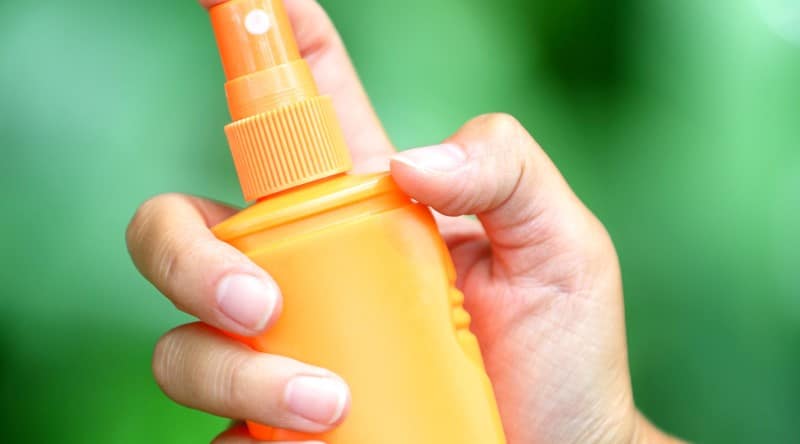
You may avail DEET in lotion and spray forms, with up to 100% concentration. According to Consumer Reports, there is a direct connection between the hours of concentration and the concentration of DEET. At 100% of DEET, you can be protected for up to 12 hours. At 20 to 34% DEET, you can be protected for 3 to 6 hours. It is recommended by the CDC that you use 30-50% DEET to prevent the spread of insect-borne pathogens.
Manufacturers caution users that DEET products should not be applied under your clothes and on broken or damaged skin. You should make sure that you wash the DEET product off your skin when you do not need it anymore or in between repellent applications. Take note that DEET can be irritating to the skin. You can also experience headaches, difficulty in breathing, and burning eyes. The US EPA (Environmental Protection Agency) reported about 14 to 46 cases of possible seizures and fatalities associated with DEET. According to Cornell University’s Pesticide Information Project of Cooperative Extension Offices, the employees of Everglades National Park who have been exposed extensively to DEET experiences impaired cognitive function, insomnia, and mood disturbances.
When you use 10 to 30% DEET the proper way, it is safe for children and adults. This is information from the American Academy of Pediatrics. The Academy also says that DEET should not be applied on the skin of infants below two months of age. DEET can strengthen the toxic effects of carbamate insecticides (acetylcholinesterase inhibitors). This means that DEET’s olfactory effects are enhanced by its neurological effects on blood sucking insects.
Detection of DEET in Bodily Fluids
DEET can be detected in urine, blood, or even plasma by means of liquid or gas chromatography-mass spectrometry. This confirms poisoning in patients who are hospitalized. This can also give sufficient evidence in an investigation for a medicolegal death. DEET concentrations in plasma or blood are estimated to be about 0.3 to 3.0 milligrams per Liter during the initial eight hours after applying it topically Greater than 6 milligrams per Liter of DEET is found in patients who are intoxicated. More than 100 milligrams per Liter of DEET are in patients who are diagnosed with acute intentional overdose.
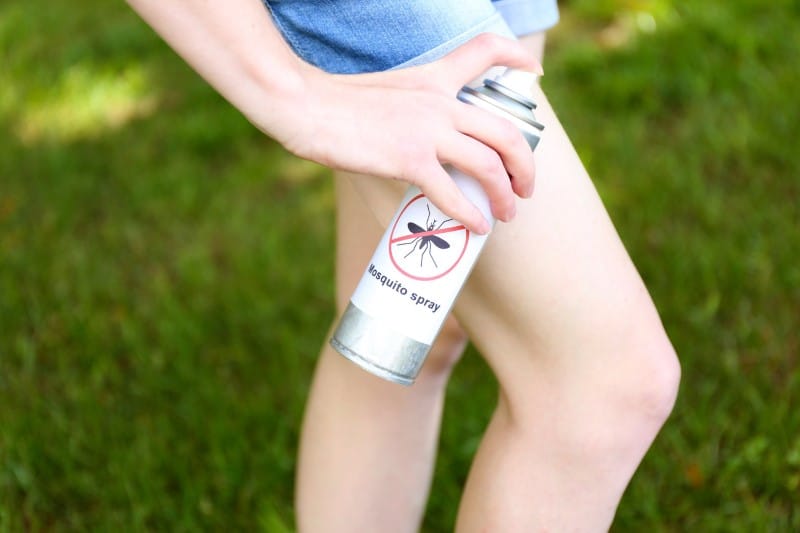
It is known that DEET is a potent solvent. It can dissolve synthetic fabrics (plastics, spandex, and rayon) and some crystals used in making watches. It can also dissolve varnished or painted surfaces, which include nail polish.
Benefits of DEET
DEET has the following benefits:
- Repels blood sucking, disease-carrying insects.
- It can protect you from mosquitoes outdoors.
- It can protect you from ticks for about two to twelve hours (this depends on the percentage of DEET).
Reminder in Using DEET
Pesticides are all required by FIFRA to be used based on the approved label. The CDC says that products with DEET should be used per directions. It is not considered harmful at all, but in rare occasions, it can cause skin irritation. To be certain that you are using DEET products properly, here are some tips:
- You should read and stick to the precautions and directions indicated on the label.
- Refrain from applying DEET products near the mouth and eyes, or on the hands of children.
- Do not apply on irritated or wounded skin.
- Do not apply on skin, under your clothing.
- Do not let young children use DEET products.
- Make sure you use just enough DEET repellent on your clothes or skin.
- Wash the DEET treated clothes thoroughly before you wear them again.
- Do not spray DEET products in areas with poor ventilation.
- Spray DEET on your hand your hands first before you apply it.
- Wash your skin when you go back indoors. Use soap and water.
Facts about Permethrin
Permethrin is sold as both an insecticide and medication. It is an effective treatment for lice and scabies. For topical application, you can use permethrin as lotion or cream. For repelling insects, you can spray it on mosquito nets and clothing. When insects touch the surface of the nets and clothing, they die easily.
Permethrin’s side effects are irritation of the skin area. Rashes may appear. You can use it on people above two months of age. Permethrin belongs to the pyrethroid group of medications in the market. It disrupts the neurons of scabies and lice.
Uses of Permethrin
1.As an insecticide, permethrin is used as the following:
- Protectant for crops against insects (it is lethal to bees)
- Insect controller in domestic and industrial settings
- Killer for livestock parasites
- Killer for insect that attack woolen products
- Treatment for human head lice
- Disinfectant for aircrafts before descent, deplaning, or departure as required by the ICAO, WHO, and IHR
2.As an insect screen or insect repellent
- Protectant in the form of a cloth impregnant in mosquito nets and in uniforms of the US military
- Treatment for timber
- Flea treatment or preventative for pets
- Enhancement for the effectiveness of piperonyl butoxide
3.As a medication
- Permethrin can be used in the form of lotion or cream. It is prescribed for the prevention and treatment of scabies and head lice
- Scabies treatment: patients older than two months of age are told to apply permethrin from the head to the soles of their feet. You should wash off the affected areas of the skin after eight to fourteen hours. Just one treatment of permethrin is enough as a curative.
- Lice treatment. Just apply permethrin to the neck, hair, and scalp after you shampoo. Leave it there for about ten minutes before you rinse. Remember to avoid getting the product in your eyes.

Like other repellents, permethrin can cause burning and mild irritation of the skin. Not all of permethrin is absorbed through the skin. It is categorized as safe to use in children above two months of age and in adults. As a substance assigned as Pregnancy Category B, permethrin does not affect fertility of is not teratogenic. Though it is unknown if permethrin passes through breastmilk, pregnant mothers are advised to stop breastfeeding during permethrin treatment.
If you are exposed excessively to permethrin, you may experience muscle weakness, seizures, shortness of breath, headaches, nausea, and excessive salivation. Measurement of the urinary metabolites is used to monitor employee exposure to permethrin. Severe overdose from permethrin can be measured through blood plasma or serum analysis.
Permethrin does not cause immunotoxicity or genotoxicity in farm animals and humans, yet the EPA classified it as a possible carcinogen. This conclusion is based on the animal studies performed on mice, which developed tumors in the liver and lungs when they were fed by permethrin.
Metabolism of Permethrin
The liver is the site of permethrin metabolism. It is where its oxidation through the cytochrome P450 system occurs. It is also where it is hydrolyzed into metabolites. Through urinary excretion, the metabolites are eliminated from the body.

Permethrin can be found in the form of sprays, liquids, dusts, powders, treated clothing, and aerosol solutions. It is also found in flea collars, spot-on treatments for dogs, and cattle ear tags. At present, there are about 1,400 products that contain permethrin. Some of these registered products treat head lice and scabies in humans. The U.S. FDA (Food and Drug Administration regulate the said products.
Permethrin’s Effects on Target Insects
Once insects touch or eat permethrin, their nervous system is affected greatly. Permethrin causes muscle paralysis, muscle spasms, and, eventually, death. This substance is highly toxic to insects that to dogs or people. The reason behind this is that insects cannot break permethrin down as quickly as dogs and humans. Permethrin is also toxic to cats because their bodies take a longer time to metabolize it.
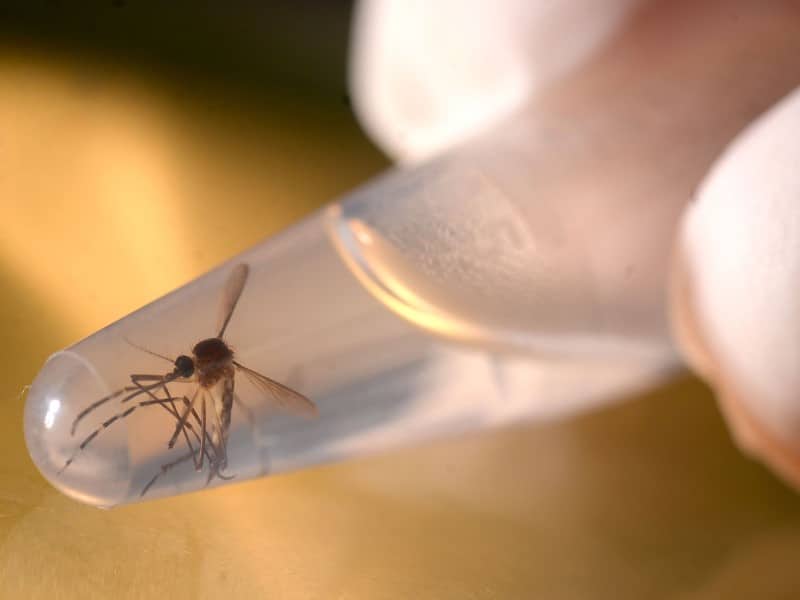
If you are torn between DEET and permethrin, just consider the harmful effects of DEET. Permethrin is better because it has no side effects that are as detrimental as those of DEET. Talk to your healthcare provider about DEET and permethrin, so that you can make the best choice of repellent for you and your family.


